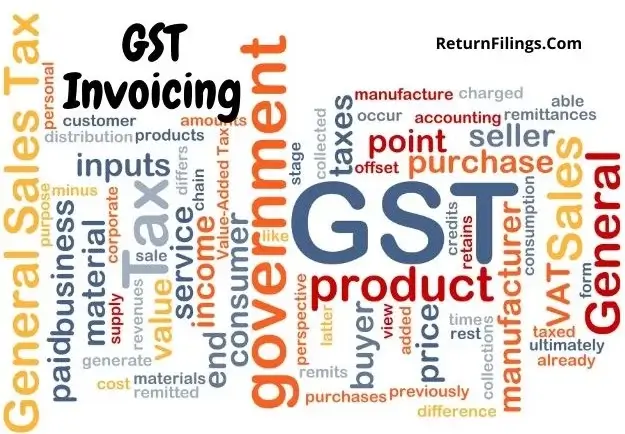GST E-Invoicing in India: Applicability, Process & Compliance
1. Introduction
Invoicing is a critical aspect of business transactions, serving as the primary document establishing the buyer-seller relationship. Under the Goods and Services Tax (GST) regime in India, e-invoicing has been introduced to streamline tax compliance, reduce errors, and improve transparency. This guide provides a comprehensive overview of GST e-invoicing, its applicability, process, benefits, and compliance requirements.
2. What is GST E-Invoicing?
GST e-invoicing refers to the electronic generation and reporting of invoices on the government’s Invoice Registration Portal (IRP). It aims to standardize invoice reporting by providing a unique Invoice Reference Number (IRN) for every invoice issued.
3. Applicability of GST E-Invoicing
Initially, e-invoicing was applicable to businesses with a turnover exceeding INR 100 crore from April 1, 2020. However, the threshold has been gradually reduced, making it mandatory for businesses with turnover exceeding INR 5 crore from August 1, 2023.
Time Limit for Reporting: From 1st November 2023, businesses with an Annual Aggregate Turnover (AATO) of ₹100 crore or more are required to report tax invoices, credit notes, and debit notes to the Invoice Registration Portal (IRP) within 30 days of issuance. This 30-day reporting requirement will extend to taxpayers with an AATO of ₹10 crore or more from 1st April 2025.
E-invoicing applies to the following transactions:
• Business-to-Business (B2B) Supplies: Transactions between registered businesses.
• Exports: Supplies of goods or services outside India.
• Supplies to Special Economic Zones (SEZs): Transactions with SEZ units or developers.
• Deemed Exports: Transactions considered as exports under GST law.
3.1 Exemptions from E-Invoicing
The following entities are exempt from e-invoicing:
• Banking companies and financial institutions
• Goods Transport Agencies (GTA)
• Suppliers of passenger transportation services
• Suppliers of services by way of admission to exhibition of cinematographic films
• Admission to exhibition of cinematographic films in multiplex screens.
• SEZ units (Note: SEZ developers are not exempt).
• Government departments and local authorities.
These exemptions are detailed in CBIC Notification No.13/2020 – Central Tax, as amended from time to time.
4. Key Components of an E-Invoice
Though there is no specific invoice format under GST, the e-invoice must contain mandatory details such as:
• Seller’s GSTIN and address
• Buyer’s GSTIN and address
• Invoice date and number
• HSN/SAC code for goods/services
• Bill-to/Ship-to details (if applicable)
• Quantity and unit of goods supplied
• Total invoice value
• Applicable GST bifurcated as CGST, SGST, IGST, and UTGST
5. Process of Generating GST E-Invoices
Step 1: Preparation of Invoice
The supplier generates an invoice using their ERP/accounting system or manual invoicing system.
Step 2: Uploading Invoice Details
The invoice details are uploaded to the IRP via API integration or manually on the GST e-invoicing portal.
Step 3: IRN Generation
The IRP validates the invoice and generates a unique Invoice Reference Number (IRN) along with a QR code.
Step 4: E-Invoice Return to Supplier
The IRP returns the digitally signed e-invoice to the supplier, who then shares it with the buyer.
Step 5: Auto-Population in GST Returns
The invoice details automatically reflect in the GSTR-1 of the supplier and GSTR-2A of the recipient, streamlining reconciliation.
6. Benefits of GST E-Invoicing
• Reduces Compliance Burden: Automates invoice reporting, minimizing manual errors.
• Faster ITC Reconciliation: Ensures real-time tracking of invoices, simplifying input tax credit (ITC) claims.
• Prevention of Tax Evasion: Enhances transparency by curbing fraudulent invoicing.
• Integration with E-Way Bills: Facilitates automatic e-way bill generation, reducing paperwork.
• Standardized Data Format: Ensures seamless interoperability across different accounting systems.
7. Common Challenges in E-Invoicing Implementation
• Technical Integration: Businesses must integrate their ERP/accounting software with the IRP.
• System Downtime: Occasional portal downtimes may impact invoice processing.
• Training Employees: Businesses need to train staff for compliance with e-invoicing regulations.
• Handling Errors and Rejections: Invoices with incorrect details may get rejected, requiring resubmission.
8. Case Study: Implementation Success
Example:
XYZ Pvt. Ltd., a manufacturing company with an annual turnover of INR 150 crore, implemented GST e-invoicing in 2021. Initially, they faced integration challenges, but after automating their ERP system with IRP API, they reduced invoice errors by 60% and improved ITC reconciliation, leading to better cash flow management.
9. Compliance Requirements and Penalties
Non-compliance with e-invoicing rules can lead to penalties under GST law:
o INR 10,000 per invoice for failure to generate an IRN.
o INR 25,000 for incorrect or false e-invoices.
To avoid penalties, businesses must ensure accurate and timely e-invoicing compliance.
Issuing invoices without complying with the e-invoicing requirements can lead to:
o Invalid Invoices: Such invoices are considered invalid under GST law, potentially leading to denial of Input Tax Credit (ITC) for buyers.
o Penalties: Businesses may face penalties for non-compliance with GST regulations.
10. Conclusion
GST e-invoicing is a significant step towards digital tax compliance, ensuring transparency and efficiency in invoice management. Businesses must stay updated with evolving GST regulations and implement necessary measures to comply with e-invoicing requirements. By leveraging automation and proper training, organizations can streamline operations and improve tax compliance efficiency.
For professional assistance, reach out to us on email: info@returnfilings.com or on whatsapp: https://wa.me/919910123091 to ensure all statutory obligations are met on time.
frequently asked questions (faq's) related to GST E-Invoicing
Q What is GST e-invoicing?+
A GST e-invoicing is the electronic generation of invoices in a standardized format. Under this system, specified businesses generate invoices electronically on a common portal and obtain an Invoice Registration Number (IRN), making the invoice legally valid.
Q Why was e-invoicing introduced?+
A E-invoicing was introduced to: Standardize invoicing practices, reduce tax evasion, improve transparency, automate data reconciliation, and reduce errors and discrepancies.
Q Who is required to generate e-invoices?+
A Currently, businesses with an aggregate turnover exceeding INR 5 crore in any preceding financial year are required to generate e-invoices. The threshold has been progressively lowered from higher turnover limits.
Q What is an Invoice Registration Number (IRN)?+
A An IRN is a unique identification number generated by the Invoice Registration Portal (IRP) for every e-invoice. It serves as proof that the invoice has been authenticated by the GST system.
Q What is a QR code on an e-invoice?+
A A QR code is a machine-readable code printed on the e-invoice. It contains important invoice details and can be scanned to verify the authenticity of the invoice.
Q How are e-invoices generated?+
A E-invoices are generated through the IRP. Businesses can integrate their accounting software with the IRP or use offline tools provided by the government to create and upload invoices in the prescribed JSON format.
Q What is the process for generating an e-invoice?+
A The process involves: Generating the invoice in the prescribed format, uploading the invoice data (in JSON format) to the IRP, IRP validating the data and generating the IRN and QR code, IRP digitally signing the invoice, and downloading the digitally signed e-invoice with IRN and QR code.
Q What is the role of the IRP (Invoice Registration Portal)?+
A The IRP is a government portal that authenticates e-invoices by generating the IRN and QR code.
Q What are the different modes of generating e-invoices?+
A E-invoices can be generated via direct API integration with the IRP, through GST Suvidha Providers (GSPs), or using offline tools provided by the government.
Q What are the benefits of e-invoicing for businesses?+
A Benefits include: Improved efficiency and automation, reduced errors and discrepancies, faster payment cycles, enhanced transparency and compliance, and reduced paperwork.
Q What are the benefits of e-invoicing for the government?+
A Benefits include: Increased tax compliance, reduced tax evasion, better tracking of transactions, and improved data analytics.
Q What happens if I don't generate e-invoices when required?+
A Non-compliance can lead to penalties as per GST law.
Q Can I amend an e-invoice after it has been generated?+
A E-invoices cannot be amended. If there is an error, a credit note or debit note must be issued.
Q What happens if the IRP is down?+
A The government may provide relaxations in such situations. Check the GST portal for announcements.
Q What is the format of an e-invoice?+
A The e-invoice format is specified by the GST Council and is based on the PEPPOL (Pan-European Public Procurement On-Line) standard.
Q How do I integrate my accounting software with the IRP?+
A You need to work with your accounting software provider or a GSP to enable API integration with the IRP.
Q What is the JSON format for e-invoices?+
A The JSON format is a specific structure for exchanging e-invoice data, detailed in the e-invoice schema published by the GST Council.
Q How do I print an e-invoice?+
A You can print the e-invoice from your accounting software or offline tools. The printed invoice must include the IRN and QR code.
Q What are the HSN codes required for e-invoicing?+
A You will need the correct HSN codes for your goods or services to generate accurate e-invoices.
Q What is the role of a GSP in e-invoicing?+
A A GSP (GST Suvidha Provider) provides services to businesses for generating and uploading e-invoices and integrating with the IRP.
Q How do I cancel an e-invoice?+
A E-invoices can be cancelled within a specified time limit (usually 24 hours) of generation through the IRP.
Q What are the common errors faced while generating e-invoices?+
A Common errors include incorrect data entry, invalid HSN codes, and technical issues with software integration.
Q How can I track the status of my e-invoices?+
A You can track the status on the IRP.
Q What are the latest notifications and circulars related to e-invoicing?+
A The GST portal is the official source for notifications and circulars related to e-invoicing.
Q Where can I find help and support for e-invoicing?+
A The GST portal provides resources and helpdesk support for e-invoicing.
- For further reading, explore the following topics:
- 📑 Documents required for registered address change in India
- 🚫 GST Cancellation and Surrender in India: Key Reasons, Procedure, and Tax Implications for Businesses
- 🔧 GST Modifications in India: Types, Procedure, Benefits & Compliance Requirements for Businesses
- 📜 Compliance checklist for restoration of struck-off companies

